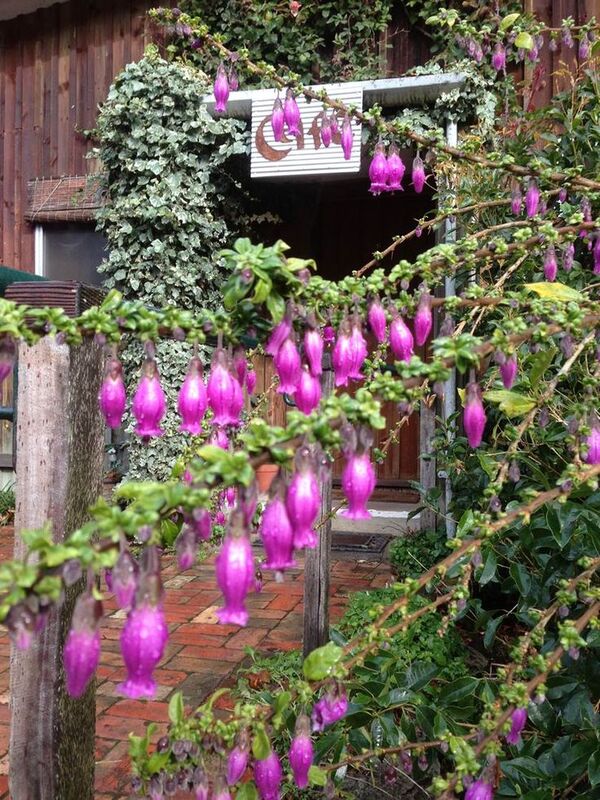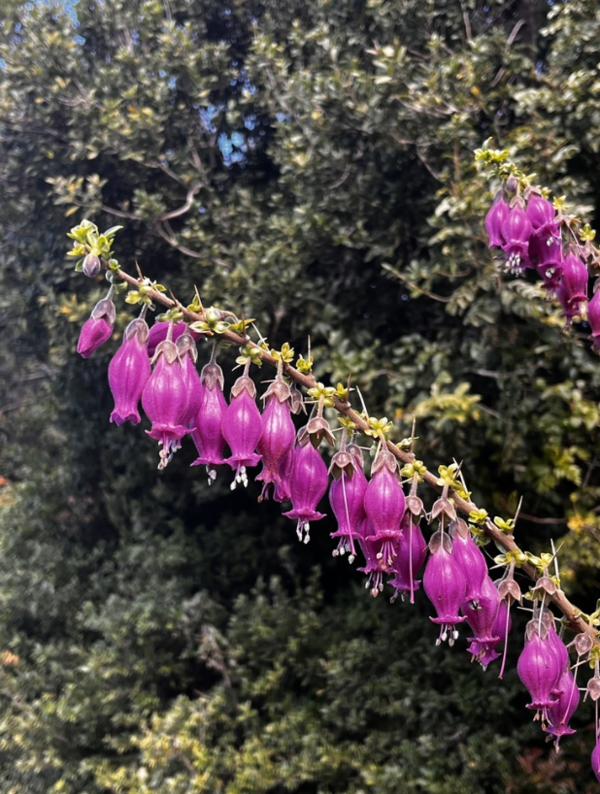Latua pubiflora, commonly known as the Wizard Tree, Hairy-flowered Latua, or simply Wildflower, is a mysterious and fascinating plant native to the Andes mountains in South America, particularly in Chile and Argentina. With its striking appearance and deep connection to local mythologies and spiritual practices, this plant holds a special place in both the botanical and cultural worlds. While not widely known globally, Latua pubiflora has garnered interest from those who seek to explore its cultural significance, unique form, and even its psychoactive properties.

Latua pubiflora is a small to medium-sized shrub or small tree that typically reaches heights of 3 to 5 meters (10 to 16 feet). Its most distinguishing feature is its dense, oval-shaped leaves, which are covered with soft, fine hairs, giving the plant a "hairy" or velvety texture. The leaves are deep green and provide the plant with a striking appearance, blending harmoniously with the surrounding landscape.
The flowers of Latua pubiflora are its most captivating feature. They are bell-shaped and can range in color from soft pinks to purples, with fuzzy petals that enhance their ethereal appearance. These flowers grow in clusters at the tips of the branches, creating a soft, airy display that attracts local wildlife, including hummingbirds and insects. The blooms typically appear in late spring to early summer, adding a touch of elegance to the plant’s overall look.
Native to the high-altitude regions of the Andes mountains, Latua pubiflora is well-adapted to the harsh and cold climates of the region. These environments are characterized by low temperatures, dry conditions, and significant diurnal temperature variations (hot days and cold nights). The plant’s ability to thrive in these tough conditions makes it a resilient species, capable of surviving in well-drained, rocky soils where other plants may struggle.
While it prefers cool, temperate climates, Latua pubiflora can tolerate a range of conditions. However, it is highly sensitive to excessive moisture, so well-drained soil is essential to prevent root rot. In cultivation, it requires a sunny or partially shaded location and should be protected from harsh winds and extreme cold, especially in regions that experience frost.
The Wizard Tree holds an important place in the cultural and spiritual traditions of the indigenous peoples of Chile and Argentina. For centuries, it has been used in various ceremonies, rituals, and spiritual practices, often linked to shamanism and the mystical aspects of Andean culture. In these traditions, Latua pubiflora is believed to possess powerful, supernatural qualities.
The plant is sometimes referred to as a "spiritual plant" because of its reputed psychoactive properties. In local shamanic practices, it has been used to enhance vision quests, facilitate communication with the spirit world, and even as a tool for divination. It is said that consuming certain parts of the plant can lead to altered states of consciousness, where the user experiences vivid visions, heightened senses, and a deeper connection with nature and the spiritual realm.
For many native communities, the plant is seen as a conduit to the divine, enabling spiritual leaders and shamans to bridge the gap between the earthly and spiritual worlds. In this context, Latua pubiflora is not just a plant but a sacred ally in the pursuit of spiritual growth and insight.

One of the key reasons Latua pubiflora has gained attention in both botanical and pharmacological studies is its psychoactive effects. The plant contains alkaloids, including a compound known as latutine, which is believed to have stimulant and hallucinogenic properties. In some indigenous cultures, the leaves and flowers of the Wizard Tree are used to prepare medicinal brews or infusions that are consumed in controlled doses during spiritual rituals.
While the psychoactive effects of Latua pubiflora are known, it is important to note that the plant is highly potent, and its effects can be unpredictable. In some cases, consuming too much of the plant may lead to severe side effects such as dizziness, nausea, and confusion. This has led to the plant being classified as a dangerous substance in many countries, and its use is strictly regulated or even prohibited in some regions.
Modern studies are exploring the plant's potential for use in traditional medicine, particularly in the treatment of mental health conditions, pain management, and even as a tool for stress relief. However, due to its hallucinogenic properties, it remains a controversial subject of study, and it is advised that anyone interested in exploring the plant’s effects do so under professional supervision.
Cultivating Latua pubiflora outside its native habitat can be challenging but rewarding. Gardeners interested in growing this enigmatic plant must replicate the cool, dry conditions it experiences in the wild. Here are some essential care tips for those looking to grow it:
Light: The plant requires full sunlight or partial shade. However, it should be protected from intense midday sun, as this can cause stress or damage to the leaves.
Soil: Latua pubiflora thrives in well-drained, slightly acidic to neutral soil. A sandy, loamy mix with good drainage is ideal. If growing in pots, use a cactus or succulent mix.
Watering: Being a hardy plant, it does not need frequent watering. Overwatering is a common mistake, leading to root rot. Water only when the soil is completely dry.
Temperature: The plant thrives in cooler temperatures, with a preference for 15–20°C (59–68°F). It should be protected from frost and harsh winter conditions, as freezing temperatures can damage or kill the plant.
Pruning: Pruning is minimal, but it is essential to remove dead or damaged branches to encourage healthy growth. Regularly check for any pests or diseases that may affect the plant.
Latua pubiflora, the Wizard Tree, is a captivating and mysterious plant that has fascinated botanists, spiritual seekers, and gardeners alike. With its unique appearance, profound cultural significance, and potent psychoactive properties, it stands as a symbol of the rich spiritual heritage of the Andes. Whether you are drawn to its beauty, intrigued by its cultural associations, or curious about its potential medicinal uses, this enigmatic plant offers a wealth of wonder and intrigue.
If you are lucky enough to encounter Latua pubiflora in the wild or through cultivation, take the time to appreciate not only its visual appeal but also the deeper connections it holds within the tapestry of Andean spirituality. As we continue to explore and understand its properties, the Wizard Tree remains a testament to the power and mystery of nature.
animal tags: Latua-pubiflora
We created this article in conjunction with AI technology, then made sure it was fact-checked and edited by a Animals Top editor.